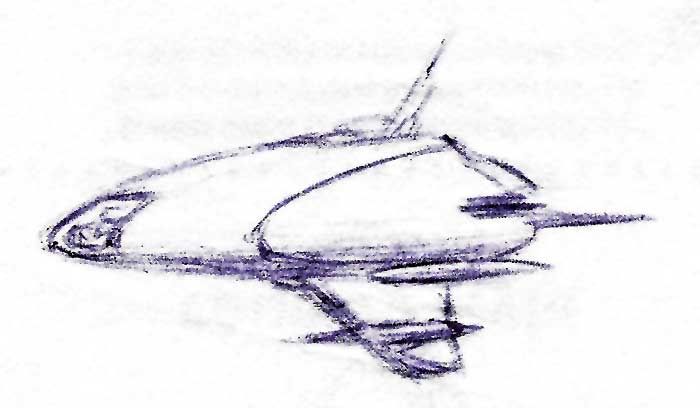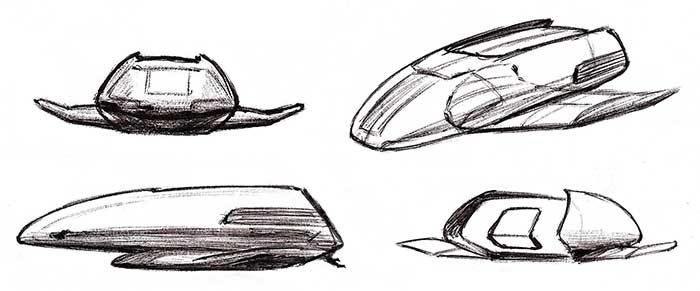Thanks. This has been an interesting development that has gone hand-in-hand with the evolution of story.
Many years ago I was writing TOS fanfic along with some friends and we put a zine together that we peddled at Toronto Trek cons. We tried to make our stories about ideas and more like the actual TOS episodes. We wanted the characters doing interesting things. It was born out of a dissatisfaction with how we saw the state of Trek on TV and film. This was around the mid '90s.
After awhile I came to the conclusion that while the fanfic was fun we were still hampered to some extent by remaining faithful to how the Trek universe was setup (as seen from the perspective of TOS). So someone suggested I try writing original SF.
Now I was also enjoying non Trek SF novels and thinking how cool it would have been to see some of that kind of thing in an SF film or television series. It certainly was never going to be seen on a Trek series. And so I started to fashion my own SF universe to tell the kind of stories I'd like to see done.
In the beginning you lean heavily on what you know and no matter how inventive I got I couldn't get away from feeling it was too familiar and too Trek like. This was when I was speculating about a FTL starship. I had conceived a setting, a universe, a loose historical background and characters.
Then I started to consider all the things I was disappointed with in popular visual media SF (including Trek) and many of the things I liked in SF literature. I concluded that I still wanted to do far future space adventure, but I wanted to try to do it rationalized with a better dose of credibility.
What I sacrificed was:
- a 26th century setting.
- interstellar alliances and empires with space fleets.
- FTL interstellar travel.
in exchange for:
- a 29th century setting.
- fast relativistic travel in hand with human hibernation and an extended lifespan.
- a loose affiliation of a few human colonized worlds, most terraformed and only one or two Earth like.
- a final frontier sensibility where the hero ship and characters are really on their own.
I also started reading all sorts of nonfiction works and leaning heavily on books and articles regarding speculative sciences and technologies.
I originally called my idea Far Space (and this was before the series Farscape came into being). But as it evolved and I moved away from more familiar concepts I changed the name of my idea to The Starkind.
And that's how it stands presently as I'm writing a novel while designing my hero starship.
Many years ago I was writing TOS fanfic along with some friends and we put a zine together that we peddled at Toronto Trek cons. We tried to make our stories about ideas and more like the actual TOS episodes. We wanted the characters doing interesting things. It was born out of a dissatisfaction with how we saw the state of Trek on TV and film. This was around the mid '90s.
After awhile I came to the conclusion that while the fanfic was fun we were still hampered to some extent by remaining faithful to how the Trek universe was setup (as seen from the perspective of TOS). So someone suggested I try writing original SF.
Now I was also enjoying non Trek SF novels and thinking how cool it would have been to see some of that kind of thing in an SF film or television series. It certainly was never going to be seen on a Trek series. And so I started to fashion my own SF universe to tell the kind of stories I'd like to see done.
In the beginning you lean heavily on what you know and no matter how inventive I got I couldn't get away from feeling it was too familiar and too Trek like. This was when I was speculating about a FTL starship. I had conceived a setting, a universe, a loose historical background and characters.
Then I started to consider all the things I was disappointed with in popular visual media SF (including Trek) and many of the things I liked in SF literature. I concluded that I still wanted to do far future space adventure, but I wanted to try to do it rationalized with a better dose of credibility.
What I sacrificed was:
- a 26th century setting.
- interstellar alliances and empires with space fleets.
- FTL interstellar travel.
in exchange for:
- a 29th century setting.
- fast relativistic travel in hand with human hibernation and an extended lifespan.
- a loose affiliation of a few human colonized worlds, most terraformed and only one or two Earth like.
- a final frontier sensibility where the hero ship and characters are really on their own.
I also started reading all sorts of nonfiction works and leaning heavily on books and articles regarding speculative sciences and technologies.
I originally called my idea Far Space (and this was before the series Farscape came into being). But as it evolved and I moved away from more familiar concepts I changed the name of my idea to The Starkind.
And that's how it stands presently as I'm writing a novel while designing my hero starship.


